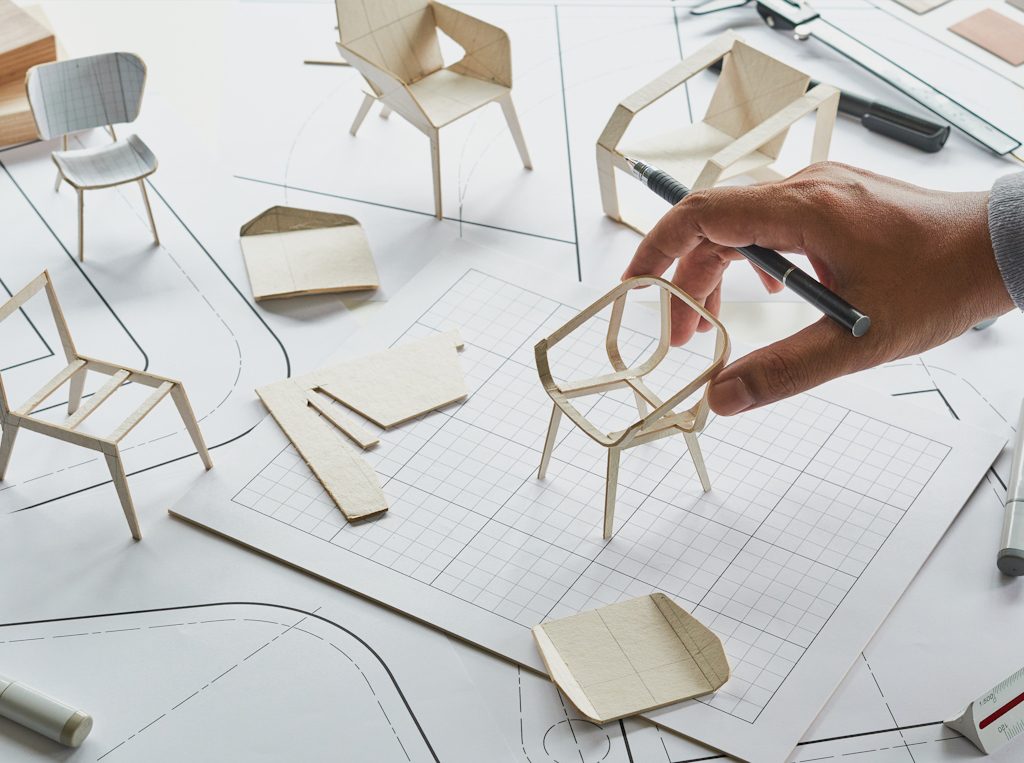Confirmation Bias is Real
“So, you could find out that your hypothesis is not true, right?” I said to my friend who was working on her PhD thesis in art history.
“Yes. However, it would be better for my PhD defense if my hypothesis is correct.”
“But isn’t it an experiment? Doesn’t whatever you find out, including disproving your hypothesis, contribute to the body of knowledge? Isn’t that the point of science?”
“Yes, technically, that’s true. But researchers like to prove their hypotheses. Everything is geared around that.”
My friend was in academia, but I had witnessed this scenario play out in the corporate world. Confirmation bias is a common issue. If a hypothesis proves to be untrue, there is (unfortunately) a sense that the time and effort invested was wasted. Therefore, there is pressure to achieve specific outcomes, to have certainty, even at the risk of skewing results or abandoning projects.
It’s human nature to desire a clear path, to map out directions, to proceed linearly to a known destination. So, it’s no surprise that the traditional waterfall methodology remains popular in industry. There is appeal in a serial approach – when you know what’s coming next, you can plan accordingly.
What about complex process changes, dramatic innovation, or responding to customer input and changes in behavior? It’s often best to let the path take us through uncharted territory, creating learning loops, allowing failure, and taking new action as the Agile methodology does in software.
Outside software, design thinking, also called human-centered design, fosters ideation and an experimental mindsight to guide accelerated learning. It enables you to leverage insights throughout the journey via robust cross-functional collaboration across disciplines to avoid wasting resources on the wrong direction — you can more easily pivot when the unexpected happens.
When design thinking exists in organizations, it is often confined to innovation teams, but there is a case to be made for also employing its principles in the day-to-day work of any team.
There’s no such thing as a “failed” experiment
Figuring out how to use [failure] to your benefit is the real difference maker when it comes to failing forward. Don’t let your learning lead to knowledge; let your learning lead to action.
John C. Maxwell, Failing Forward: Turning Mistakes into Stepping Stones for Success
When the outcome is uncertain, it can be incredibly helpful to reframe “courses of action” as “experiments.”
By definition, an experiment is a test with an uncertain result. In my personal life, I use experiments to motivate myself to do something outside my comfort zone. For example, I might think going to an event alone will make me feel lonely and be a waste of time and money. When I frame the activity as an experiment, I reduce my expectation of my experience of the event.
Using the framework of experiments, I can take small risks, investing reasonable amounts of time, money, and emotional energy on projects and events, without pressure or self-judgement. I accept ALL outcomes – the epic fails along with the unexpected new friendships, career paths, and professional relationships. Sometimes I learn what not to do, which is just as valuable to me.
The parallels to the corporate world are clear. Team members don’t know what they don’t know! To figure out what they don’t know, they need freedom to follow hunches, to turn over rocks to collect insights and context around a problem or process. Sometimes they may find nothing under the rock they chose. Maybe they spent a day researching all the vendors who sell a product, only to find after learning about the capabilities that none can satisfy a critical requirement. On its face, that could appear to be a day wasted; but not only did they rule out potentially bad investments, they likely learned more about adjacent products, the full range of capabilities, and their own business requirements.
The experimental approach in action
Here’s a quick case study of how my team and I recently applied this thinking.
Working with a client team on a platform migration, the few team members who thought a new approach to data management could work were outnumbered, and we did not have time to document and evaluate every scenario.
Instead, we created a scrappy graphic of how it could work using a subset of data and proceeded to poke holes in it, testing the hypotheses. We modified the graphic and documented issues as we identified them. For teams used to getting stuck in endless, abstract debate, this process was a grand experiment.
It was possible that in the end, we would have concluded the data approach could not work or the exercise had not even helped. But the risk of not experimenting with this graphic model was making a far-reaching, long-term decision based on comfort with the status quo rather than finding a way to conduct concrete analysis that all team members could observe. Management fully supported this process, and the team ultimately found a hybrid solution. That solution, once implemented, required tweaking as the team observed real-time results. As with design thinking and agile approaches, iteration, not perfection, is expected.
Any company can benefit from This – Here’s How
Uncertainty is… uncomfortable. The corporate world, like academia and personal life, is rife with it, so we tend to want predictability where we can get it. Especially in a large, established organization, this can mean hesitance to diverge from tried-and-true processes and accepting unknown outcomes.
There are companies that have fully adopted design thinking approaches. But even if yours isn’t one of them, you can (and should) incorporate experimentation into your projects.
1. Prototype small

If we always feel we need to investigate the entirety of a problem, it can seem impossible to know where to start. Whereas if you decide, “I don’t know what is under those rocks, but let me look under 1 or 2 of them to see what I can find out,” you are not only learning what is under the rock, but you also are experimenting with how you get information: does investigating in this way for this particular objective yield insights? You might then choose to go deeper into one finding. Or you might choose to explore an end-to-end process on a sliver of the project: what happens for one very narrow, specific use case in the model we are testing? The prototyping step in design thinking is highly flexible about scale and breadth.
When it comes time to tackle the rest of the project, your whole team will be working smarter, toward the right solution, and with the confidence of supporting evidence they may not have had before.
2. Be willing to let go of standardization
Frameworks and formalities should help facilitate new thinking, not limit it. If your organization is overly wedded to particular processes, then the focus of a project can become adhering to those instead of finding the best solutions.
Your pilot might reveal some cracks in long-held processes or assumptions, and opportunities to do better. Is your organization prepared to act on them? If your company catapulted to success by pioneering a new process, that process may be held as sacred.
When leadership communicates (intentionally or not) a low tolerance for “failed” experiments, it can engender among the ranks a hesitance or even fear to color outside the lines. Entire functions of the organization may exist just to uphold current systems or structures.
But as with any other challenge, an agile, experimental approach can help here! By starting small, pulling on a few levers at a time, you can demonstrate the value of gradually letting go.
3. Identify an experimentation champion or team
When the stakes are high, it’s natural to default to the safety of the status quo. Many ways of thinking and working can feel fundamental not just to a company’s success, but also to its whole identity. Becoming more agile and taking risks can be a tricky cultural hurdle.
Most companies have some individuals or teams who can lead the transition to a culture of experimentation. If your software team already uses Agile development, members who have positive rapport with the business side can play a role. You also likely have some staff who, by nature, are experimenters – they may even be the staff who get in trouble for trying new ideas. They would likely appreciate training in design thinking to hone their natural skills. You will need someone at the senior level who has the right mindset to lead the charge.
Some companies initially use outside help, because they are too lean to do this on their own while also spending all day and night keeping the business’s wheels turning.
In my consulting roles, sometimes I am engaged to be the experimenter, testing a process on a very small scale, getting feedback from the company’s internal team, testing the next version, until the team has a replicable process to execute at greater scale, if needed. In other cases, I am helping the team to be experimenters, gaining insights that inform how to move forward. Rather than trying to solve a huge, abstract problem, I will facilitate their effort to carve off a critical piece of the problem for deeper exploration, ideally one that can represent many other pieces or will prove or disprove concerns.
My goal is not only to collaborate with the client team to deliver surprising findings and identify the right strategies to achieve their goals, but also to move the team toward self-sufficiency in applying design thinking principles.
The Big Takeaway
“Wasting time” experimenting is critical for success.
To speed up business strategy development and execution, your staff needs to be able to experiment with how they solve problems in their day-to-day work, not only in formal innovation workshops and projects.
Using agile and design thinking approaches, you can embrace ambiguity and experimentation, enabling individuals and cross-disciplinary teams to redefine priorities and take new action regularly, thus leading to greater overall success.
Erin Catalina contributed to this article.
Further Advisory is a boutique management consultancy focused on converting strategic vision into business reality. We always go the extra mile, equipping our clients with critical insights and plans for navigating challenges and accelerating change.




